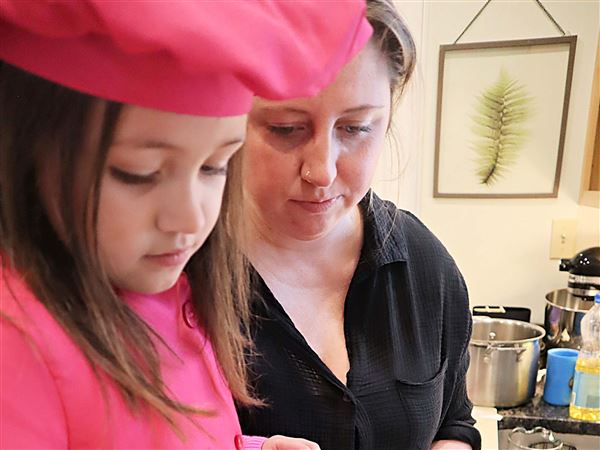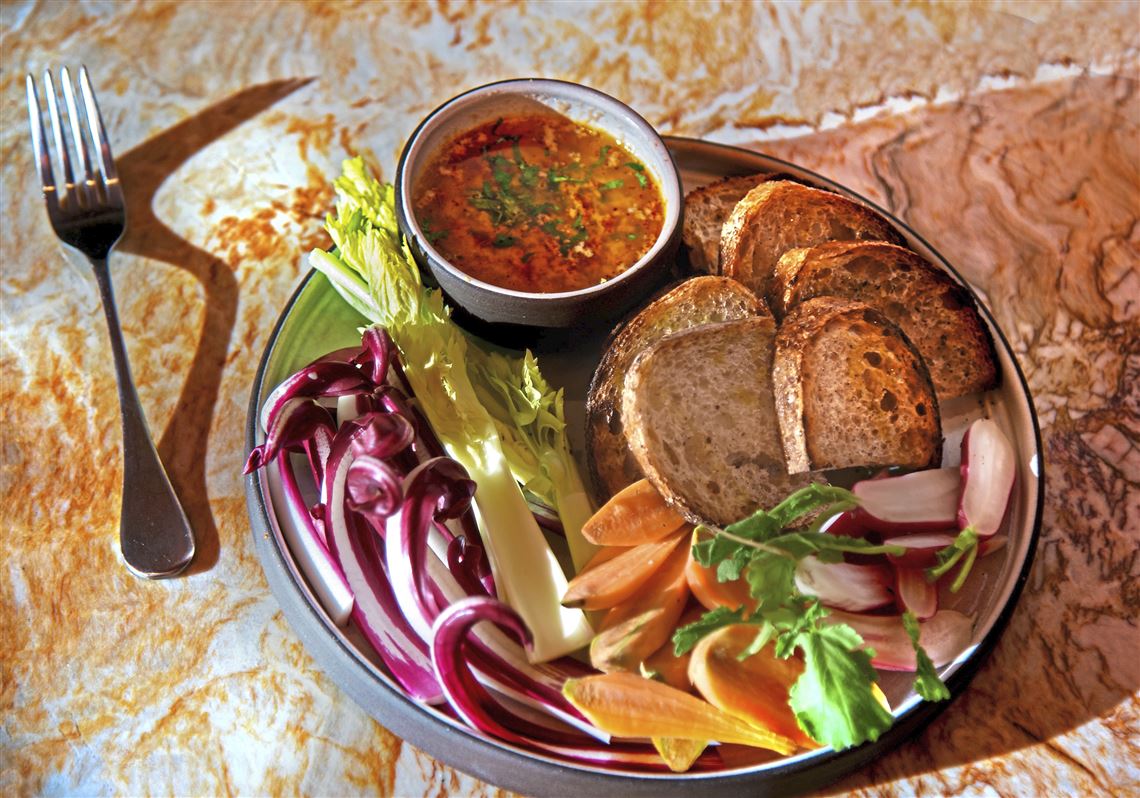Andretta Kobik knows you might be hesitant to visit her booth at Festa Italiana di Vandergrift on Aug. 11, let alone enter the food contest she’s spearheaded at the annual festival for more than a dozen years.
The simmering pans of a classic Italian dip she and her daughter, Kathi, will be keeping careful watch over is made with two of the most pungent and polarizing ingredients in Italian cooking — garlic and anchovies.
Your nose will catch a whiff of the potent mixture known as bagna cauda before you’re close enough to see it. That can be off-putting to those who didn’t grow up eating the stuff, or are hungry for something a little lighter on a hot summer day.
Lots of people are afraid of anchovies, concedes the longtime Tarentum resident. Many also shy away from food that is heavy on garlic. When you combine the two, you get an assertive dish, with lots of big flavors.
“It only appeals to the hearty and the brave,” she says.
Daniel Gritzer, culinary director at Serious Eats, puts it this way: “Most recipes want the anchovies to dissolve and then disappear, leaving behind a whisper of savoriness. Bagna cauda wants those whispers to pile up on themselves until they become a sustained and booming chorus.”
Which explains why when Ms. Kobik entices festival goers with a free sample, she doesn’t tell them the star ingredients of bagna cauda, also spelled calda.
“You say anchovies and people are like, ‘Eek! I don’t want any!’” she says with a chuckle.
Yet many are won over once they taste the dip that originated centuries ago in the Piedmont region of northern Italy, she says. She and others sell the appetizer at the fest in 6-ounce cups for $5 with a zip-lock bag full of cut-up green pepper, carrot, cabbage and celery for dipping, as well as slices of Italian bread. It always sells out.
Ms. Kobik doesn’t want you just to taste it. She wants you to try your hand at making it, then enter the bagna cauda contest. The independently judged competition has been part of the festival since its beginning 16 years ago.
Festa Italiana takes pride in its many authentic Italian foods, “and you can’t find anything more Italian than bagna cauda,” says committee member and past president Jim Putignano.
The 2018 contest drew more than a dozen contestants, and they’re hoping for even more this year, especially since the four-ingredient dish is simple enough for even novices to make. Along with bragging rights, the winner gets his or her choice of a $25 gift certificate to Giant Eagle or an apron declaring them “Bagna Cauda Champion.”
For details on the contest, go to festaitaliana.us. By July 31, call Andretta or Kathi at 724-265-4603, email festaitaliana@comcast.net or send your name, address and phone number to: Bagna Calda Contest, Vandergrift Festa Italiano, P.O. Box 115, Vandergrift, PA 15690. Then bring your dish by noon Aug. 11.
The fest also will have an amateur wine competition (entries are due July 26), with medals awarded by certified wine judges from the American Wine Society.
Festa Italiana di Vandergrift begins with an outdoor Mass by Bishop Edward Malesic at 10:30 a.m. Aug. 11. The festival runs from noon to 10 p.m.
The Piedmont region — tucked between the Alps and the Ligurian Apennines — is better known for its white truffles and nutty mountain cheeses. Bagna cauda dates at least to the 16th century. Salt was heavily taxed back in those days, and so merchants packed the valuable grains under anchovies to hide it.
Bagna cauda translates to “warm bath” in Italian, and often was served to the people who worked the vineyards as a morning pick-me-up. There are as many recipes as there are cooks, and it’s typically served with assorted raw or cooked vegetables, such as fennel, baby artichokes, endive and cardoons, a thistle-like plant that has a bitter, artichoke-like flavor. But its “official” recipe, according to the Accademia Italiana della Cucina, is: one head of garlic, half a "glass" of olive oil, 50 grams of anchovies and a piece of butter, per person.
Some like to add a little milk or cream to the mountain of mashed garlic and anchovy to make the dip creamier; others craft it with walnut oil or add truffles.
What’s not negotiable is that the cook cannot burn the garlic, and the dip must be served warm. That’s easiest from a fondue pot or some other type of flameproof casserole set over a warming candle or gas table burner.
Ms. Kobik’s father, Battista Gonella, grew up eating it in Piedmont’s capital city of Turin. He taught her to cook it as a child and she likes to serve it in small individual warmers. That prevents double dipping, the cardinal sin of bagna cauda consumption.
She likes to sliver the garlic before slowly sauteing it in olive oil. Tommy Scagna, who’s tasked with making about 20 gallons of the dip for the festival, chops his before cooking it into a paste. They agree on anchovy prep, cooking the tiny fish until they’re in very small pieces instead of completely melted into the sauce.
Mr. Scagna, whose family ran Del Vecchio’s Market in Vandergrift for years, got his recipe more than 40 years ago from Rose Cocco, who was best friends with his mother. He’s has been making it ever since, despite his Calabrian roots.
“I love the saltiness of it, and how can you go wrong with butter?” he says.
With its simple ingredients and even simpler preparation, bagna cauda is not anything special, says Ms. Kobik. “But it’s part of our heritage,” adding that if she doesn’t see it in a Northern Italian cookbook, it’s not authentic.
Speaking of which, she has some tips for the contest. Don’t use sardines or lobster, like past contestants, and definitely don’t make bagna cauda with tuna. “You can’t fake it,” she says.
And if you can’t make it to Vandergrift on Aug. 11?
Bagna cauda is not common on Italian menus, especially in summer (it’s a popular autumn to winter dish). But you can find a modern interpretation at Acorn in Shadyside, where it’s served as a dipping sauce for charred cauliflower
Gretchen McKay: gmckay@post-gazette.com, 412-263-1419 or on Twitter @gtmckay.
First Published: July 24, 2019, 12:00 p.m.

















